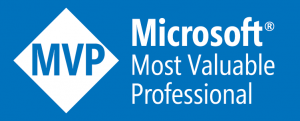10 Tactics to Amplify Your Brand
The Product or Technology Evangelist is a role that has become increasingly visible within technology organizations offering software or services, with a range of responsibilities and skill sets. For those with an entrepreneurial background, many of the common traits of the evangelist fall squarely into the guerilla marketing tactics that many of us have employed when starting and running our businesses, taking a new product or service to market, or in our efforts to demonstrate thought-leadership within our communities. The goal of the evangelist is to amplify your brand, which has been my role for most of the past decade.
My Path into Evangelism
While my undergraduate and business degrees are marketing-centric, I spent the first 20 years of my career focusing on non-marketing roles, first as a business analyst and technical writer at the start of my career, and then in technical project management. When I co-founded my first company back in 1997, I was working at a full-time job. In fact, I was working full-time while going to business school at night and weekends, with three small children at home — and my fourth was born in the midst of this entrepreneurial adventure. What better time to start a company, right?
With this first company, I did not have the budget for media buys, external marketing services, or any outside help at all. Of course, this was prior to any of the social networks we know and use to promote our solutions and demonstrate our expertise, with the major search engines and SaaS offerings just beginning to enter the scene. Much of my community and brand development at that time had more to do with professional networking and boots-on-the-ground promotion.
It was during this time of building and promoting my own software company that I shaped much of my thinking around what I now label as Technology Evangelism — and the growth of social networking, marketing automation tools, and influencer marketing techniques have only increased the speed and depth of what is possible around branding and messaging, content creation, and promotion.
Suggestions to Amplify Your Brand
I am approached regularly with questions about marketing and promotion, and thought I would share a few of the actionable methods and concepts that I still employ to this day — with my own company, CollabTalk, and with my customers. I’ve provided a combination of tactical and strategic actions, providing you some things that can be implemented immediately and others that will need to be folded into your ongoing marketing activities. My focus is also toward online activities, as so much of marketing these days is digital.
Here are my suggestions:
- Leverage your email signature. One of the most under-utilized marketing tools is embedded within every email you send. Email marketers battle with incredibly low click rates, mostly because people inherently ignore advertisements. But an “ad” within your email signature is looked upon differently. You already have some degree of trust through your email communications — and an advertisement included as part of your email signature has a much higher tolerance level, and click-through rate. There are inexpensive solutions out there, such as Exclaimer, that can help you turn every email your team sends into a marketing tool.
- Improve your content frequency. I was visiting the headquarters of Sharegate in Montreal a few years back, and asked someone on their marketing team about their content marketing strategy. They responded that their goal was to produce fewer posts of higher quality. I responded “Oh, that’s an interesting approach. My strategy is to produce a higher quantity of high-quality posts.” Most of my clients know that I was being completely honest in this response. There is a direct correlation between frequency and conversion. Yes, high-quality content performs better than low-quality content. In my experience, most people confuse high-quality with feature-length (2000-2500 words or longer) content. My strategy might mean decreasing the length of your posts, breaking your feature-length manuscript into smaller pieces, creating a consistent and frequent release schedule. Increasing the frequency has an immediate impact on the number of unique visitors, the time spent on your site, and the number of conversions.
- Be consistent in your branding. One of the best takeaways from my time as the Chief Evangelist for SharePoint ISV Axceler was the internal mantra to “Defend the Brand.” There are a number of ways you could interpret this, but one things the company did well was to saturate our content, campaigns, and events with a consistent look and feel and treatment of our brand. The brand, like our sales methodology, was loud (we lovingly referred to this as being “aggressively charismatic”) and bold, we also stood out. When salespeople were on the road or at an event, their shirts and caps were branded. Our brochures, content, and videos were also very consistent in their branding.
- Think in terms of campaigns, not stand alone posts and tweets. I learned this lesson early, with my first startup. Before there were these things called “blogs” we wrote articles and then edited in HTML, posting them to our website via FTP. But even in those early days, the content we created as individual articles was part of a broader content strategy, built around a larger outline which would become our first book (co-authored with my co-founder and CTO). Each article (published through our site, on Rational Software’s website, or printed in Rose Architect magazine) was part of a defined chapter in the outline, and for each we did some degree of online promotion. In today’s terms, each post would have a structured promotional strategy — a pattern to be repeated with each successive post, and all part of a broader marketing strategy. Every article you write, every product or feature released should run through a checklist of promotional activities to ensure you are adequately (and thoroughly) promoting each piece.
- Always be thinking about your CTA. Building on the previous item on this list, you also need to be thinking about the call-to-action for every piece of content you create. What is the next step? Where do you want people to go from here? My philosophy is to give people three options: read more, try it out, or buy it. People who are not convinced to try or buy your product or service may want to have more of their questions answered before making a decision, and they may not want to jump on a call with you or participate in a webinar. For these folks, provide them with additional links to follow and read. It’ll keep those folks moving forward on the customer journey, and keep them warm as prospects until they’re ready to move forward. Some people understand the value, and want to get their hands dirty with the product or service. If you don’t have a trial version, offer them a video walk-through. And finally, there are people who are ready to make the purchase, so you need to provide a quick path to sales. Give the people what they want, and you’re going to see an increase in conversions.
- Make it easy to share. I am always astounded to find some interesting content out there, and then not have the ability to share it through automated “share” tools. Yes, I can copy and paste a URL into an email, but why add these steps for a potential buyer/fan? Make it easy for people to become your brand ambassadors. Every article you write, every video you create, and every product or service brochure available on your website should include a variety of sharing options to make it as easy as possible for people to spread the love.
- Create more videos. Video is growing at an incredible rate. According to Gartner, more than 80% of intranet content will be video by the end of 2020. The written word will never go away entirely, but most of your content plans should be shifted from blogs to video. Period. All of the content rules remain the same: higher frequency, think in terms of campaigns, remember your CTA, etc.
- Be authentic. Don’t try to be something that you are not. Working in technology, I’ve always made it clear that I am not a developer, and even my admin experience is limited. Of course, I’ve worked in the high-tech space for almost 30 years, and some of that tech knowledge tends to rub off on you. But you can’t (shouldn’t) fake it. One tactic that I employ, and which I recommend to my clients, is to follow the law of the thirds in marketing: Focus one-third of your messaging and promotional activities on your product, service, and company. Focus the next one-third on deep subject-matter expertise for your industry, and in sharing your knowledge. And finally, focus the remaining one-third on personality — your own, and the personality/culture of your company. If one of these things goes beyond the one-third by too much, your promotional activities become imbalanced. You’re either too “pitchy” and self-serving, too wonky and down-in-the-weeds, or too egocentric or self-absorbed. We know you’re representing a brand (that’s a given), we want to know that you’re an expert, and we also want to see that you’re an actual human being. When you can balance these things, it reads to people as authenticity.
- Build your messaging framework. As mentioned in the campaign tip, every piece of content, product or feature release, or sponsored event should have a checklist of promotional activities. You should build a messaging framework or template for each activity type, ensuring that you are consistent in your marketing approach, and not leaving any marketing opportunities on the table. Having a working framework make it easier to extend and grow your marketing activities later, adding marketing automation and building out customer personas and each of their buying journeys. Putting this kind of structure in place also makes it easier to measure which methods/tools are more successful, allowing you to focus — over time — on those tactics and marketing channels that provide the richest returns.
- Partner with others. I have always been a huge advocate for the partner channel. As the co-founder of the Seattle chapter of the International Association of Microsoft Channel Partners for which I served as its first president for 3.5 years, I have witnessed firsthand the tangible benefits of the partner model. While it may not fit every business model (there’s nothing wrong with the direct sales model), most brands can still benefit from partnerships and advocacy programs, where industry experts and passionate customers can become some of your best salespeople. Expand your thinking around partnerships and community, and pilot new ways for outside experts, customers and partners to extend your sales footprint.
I could go on with more suggestions…but I’ll save some of that for my consulting clients. I hope you find something from this list useful in your own marketing efforts. If you have any questions or would like more information on how CollabTalk can help your business, please comment below or email me at cbuck @ collabtalk.com





1 Response
[…] 10 Tactics to Amplify Your Brand [buckleyPLANET] […]